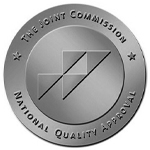 This time of year, many people are enjoying the warmer weather by spending more time outdoors. While this can be a great opportunity to get more exercise and fresh air, it can also increase your chances of being bitten by ticks. Dr. Raghavendra Tirupathi MD, Medical Director of Keystone Infectious Diseases, shares some important information about Lyme disease and what you need to know to keep you and your family safe from tick bites.
This time of year, many people are enjoying the warmer weather by spending more time outdoors. While this can be a great opportunity to get more exercise and fresh air, it can also increase your chances of being bitten by ticks. Dr. Raghavendra Tirupathi MD, Medical Director of Keystone Infectious Diseases, shares some important information about Lyme disease and what you need to know to keep you and your family safe from tick bites.
What is Lyme disease and how do you get it?
Lyme disease is an infection caused by a bacterium carried by ticks. It’s especially important for people in our area to be aware about the subject, because Pennsylvania is one of the states where Lyme disease is most common. In this country, people are most likely to be infected during the summer and fall seasons.
It’s spread to humans through the bite of an infected blacklegged tick (also known as a deer tick) which has been attached to a person’s body for at least 24 hours. They can attach to any body part, but are often found in areas such as the scalp, groin and armpits.
What are the symptoms?
Typical early symptoms include fever, headache, fatigue, muscle and joint aches, swollen lymph nodes and a bullseye-like skin rash. This rash can appear 7 to 30 days after the tick bite and can reach a size of up to 12 inches or larger. The rash is usually not itchy or painful, so it is important to check your skin regularly.
What are the long-term effects?
If left untreated, Lyme disease can have serious long-term effects as it can spread to joints, the heart, and the nervous system. Some issues it can cause include nerve and joint pain, joint swelling, inflammation of the brain and spinal cord, an irregular heartbeat, facial paralysis, and additional rashes on other areas of the body.
How is Lyme disease diagnosed and treated?
Lyme disease is diagnosed by a physician after evaluating the patient’s symptoms and history of possible or known exposure to infected blacklegged ticks. Laboratory blood tests can also be helpful in some cases. It’s most commonly treated with antibiotics, but patients with certain neurological or cardiac illnesses may require intravenous treatments.
If you find a tick on your body, what’s the best way to remove it?
You should use fine-tipped tweezers and grip the tick as closely to the skin as you can. Steadily pull the tick upward. Do not twist or jerk the tick, as this can leave parts of its mouth attached to the skin. If parts do remain after removal, you may be able to remove them with clean tweezers. If you are unable to, leave them alone and allow the skin to heal. After removal, clean the bitten area and your hands thoroughly with soap and water or rubbing alcohol.
You can dispose of a live tick by putting it in alcohol, placing it in a sealed bag or container, wrapping it tightly in tape, or flushing it down the toilet. Ticks should never be crushed with your fingers.
What can you do to protect yourself against Lyme disease?
The best way to prevent Lyme disease is by doing what you can to prevent tick bites. When spending time outside, use an insect repellant labeled as having 20% or more DEET, picaridin, or IR3535 to exposed skin. Stay away from wooded and brushy areas as much as possible. When hiking, stay in the middle of trails and try to keep away from leaf piles, tall grass and brush. Bathe or shower as soon as possible after coming indoors (preferably within two hours) to wash off any ticks that could be crawling on you.
You should check your and your child’s entire body for ticks after being in areas where they are common. While ticks are most often found in wooded, grassy or brushy places, they can also live in gardens or lawns. Keep in mind that ticks can also attach to animals and be brought into houses by pets. Tick control products may be helpful in reducing the chances of your pet carrying ticks. By taking a few simple steps, you can greatly reduce your chances of getting Lyme disease.
This article contains general information only and should not be used as a substitute for professional diagnosis, treatment or care by a qualified health care provider.




